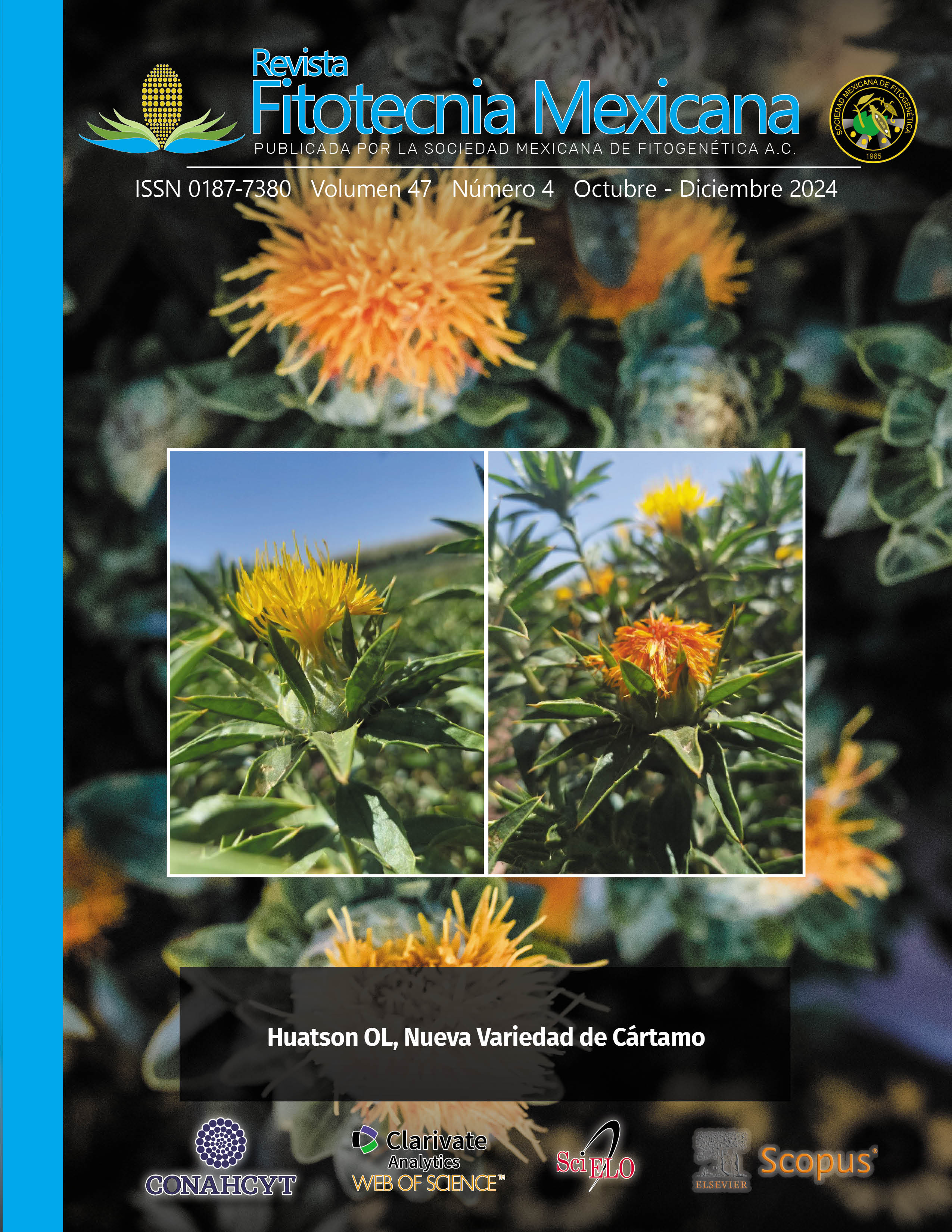FORAGE AND GRAIN YIELD, AND SILAGE QUALITY OF HYBRID MAIZE IN TULANCINGO VALLEY, MEXICO
Main Article Content
Abstract
Given the need to have new and productive genetic materials of maize for grain and forage, the objective of this study was to evaluate the performance of 12 maize hybrids for yield of forage and grain, and quality of silage in four localities of the Tulancingo Valley, Hidalgo, Mexico. Seven maize hybrids recommended for altitudes higher than 2000 masl and five for altitudes lower than 2000 masl were evaluated in the 2021 Spring-Summer season. The forage of five maize hybrids was ensiled and the quality was determined. The experiment was established in a complete randomized blocks design. Data were analyzed with SAS GLM procedure and Tukey test (P ≤ 0.05) for comparison of means. The AMMI model was used with principal components to detect stability response in environments. The H443A hybrid produced higher forage yield (P ≤ 0.05) on a dry basis (24.0 t ha-1) in the loclity of Cebolletas. There were highly significant maize material × location interactions (P ≤ 0.001). In the silages there were differences (P ≤ 0.001) between hybrids in the percentage of neutral and acid detergent fiber, starch and net lactation energy. The highest grain yield was obtained with the Cherokee hybrid in Cebolletas (7404 kg ha-1) and it was consistent in all four sites (P ≤ 0.05). The highest weight of 200 grains in the four localities was observed in the hybrid H13 (62.3 g, P ≤ 0.05), while the largest volumetric weight was obtained with H78 (83.2 kg hL-1, P ≤ 0.05). The green and dry forage yield of maize hybrids recommended for altitudes below 2000 masl exceeded those recommended for altitudes above 2000 masl; however, they had lower grain yield (P ≤ 0.05). The maíze hybrid H443A is useful for silage, while Cherokee and Caribu can be useful for forage and grain.

